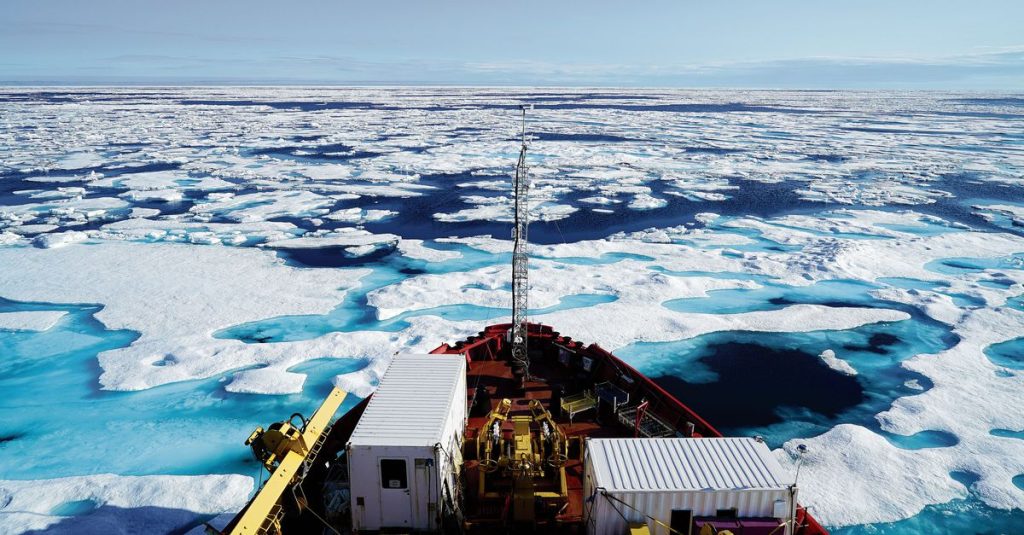Since warm, salty water rises, ice formation in the sea should be impossible. The researchers showed with modeling calculations how ice can form in the polar regions. Due to the unique properties of salt water, a warm water rise cannot go beyond a kind of “shield” in the sea. In this way, cold, fresh water remains unmixed on the surface, which could freeze more easily. The publication appeared in a scientific journal Science advances.
Almost all liquids expand when heated – and thus become lighter. But water is different. Water expands between zero and four degrees Celsius cooling. For example, water is at its lightest at zero degrees Celsius. As a result, ice always forms on the surface of the lake, because the warmer water sinks. This is because the molecules of particularly cold water form an alternating pattern, with a lot of space between the water molecules. By adopting this pattern, cold water expands, becomes lighter, and stays on the surface.
There is a way to counter this property of water: with salt. The salt gets deposited between the water molecules and disrupts the pattern. So salt water behaves much like a “normal” liquid: warm salt water expands and rises. For this reason, sea water should not freeze at the top.
“The main question of the study was why warm, salty water from the depths in the polar regions does not mix with the water at the surface, while it does mix outside the polar regions,” says Fabien Roque. He is an oceanographer at the University of Gothenburg and author of the study. “Many people thought that it was enough for fresh water to float to the surface from precipitation, but it still had to mix.”
Warm, salty water rises and collides with a shield in the polar regions
In the polar regions, the researchers wrote, it is precisely the interaction between water and salt that determines the formation of ice. Different layers of seawater form in the sea based on salinity. Salty waters are characterized by high densities and basins. Because of the precipitation, the water at the top is comparatively fresher, cooler and can freeze more easily. Due to differences in salt, the layers of sea water are too different to mix. “It’s like oil that floats on water,” says Roque. The rising warm salty water collides with the “shield”.
“The study highlights an important property of the climate system,” says Wilbert Waeger, a climatologist at Los Alamos National Laboratory in the US. According to him, the importance of the study is “purely academic”, because the already developed models take into account the properties of seawater accurately.
Kyal Stewart thought otherwise. He is a physicist oceanographer at the National University of Australia. “The study is fundamental and practically relevant. It is a key property of seawater that allows it to form sea ice. The study shows that it is essential that climate and sea ice models include a correct description of seawater. This is already happening with the most advanced models.”
A version of this article also appeared in the November 23, 2022 newspaper

“Total coffee specialist. Hardcore reader. Incurable music scholar. Web guru. Freelance troublemaker. Problem solver. Travel trailblazer.”







More Stories
GALA lacks a chapter on e-health
Weird beer can taste really good.
Planets contain much more water than previously thought